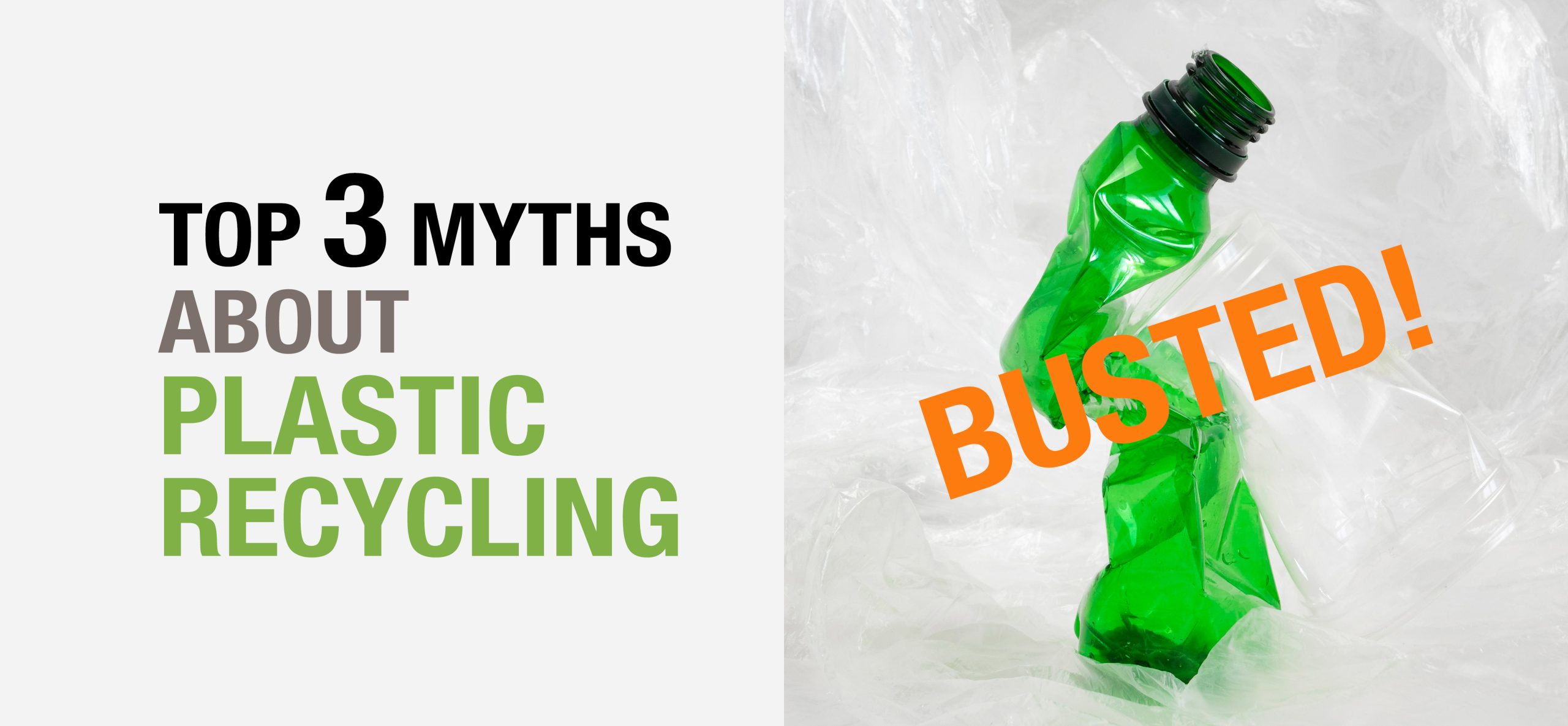3 plastic recycling myths BUSTED!

Myths about plastic recycling are holding it back. Let’s bust the 3 biggest myths so we can recycle more.
Plastic recycling plays a key role in sustainable waste management by reducing landfill use, conserving resources, and cutting carbon emissions. However, misconceptions about its effectiveness create doubts and discourage recycling efforts. Let’s bust the top 3 myths to highlight its true potential and promote better recycling practices.
Myth 1: All plastics are recyclable
BUSTED!
Not all plastics can be efficiently recycled due to composition, contamination, and inadequate recycling infrastructure.
Sorting is the biggest challenge as automation is difficult with mixed materials and residues, making plastic bags, Styrofoam, and coffee cups non-recyclable. Recycling machines efficiently filter single-type plastic waste, including post-consumer (LDPE, HDPE, PP, PS), post-industrial, and special materials like bioplastics, textiles, and automotive plastics.
Myth 2: Recycling plastic consumes more energy than it saves
BUSTED!
Plastic recycling requires 80–90% less energy than producing new plastic from raw materials.
Producing bottles from recycled plastic consumes 75% less energy than using virgin materials. Also, recycling one ton of plastic waste saves 5,774 kWh of energy, 2,604 liters of oil, 98 million Btu of energy, and 22 m³ of landfill space.
Myth 3: Recycled plastic is low quality and has limited uses
BUSTED!
Modern recycling machines produce high-quality recycled plastic with diverse applications across industries.
ONE, DUO, and DUO Twin are designed to process various contaminants, producing durable, high-grade recycled plastics for packaging, construction, and even textiles, providing a reliable and sustainable alternative to virgin materials.
To bust more myths about plastic recycling, email Alessandro Sartori at alessandro.sartori@breakmachinery.com.